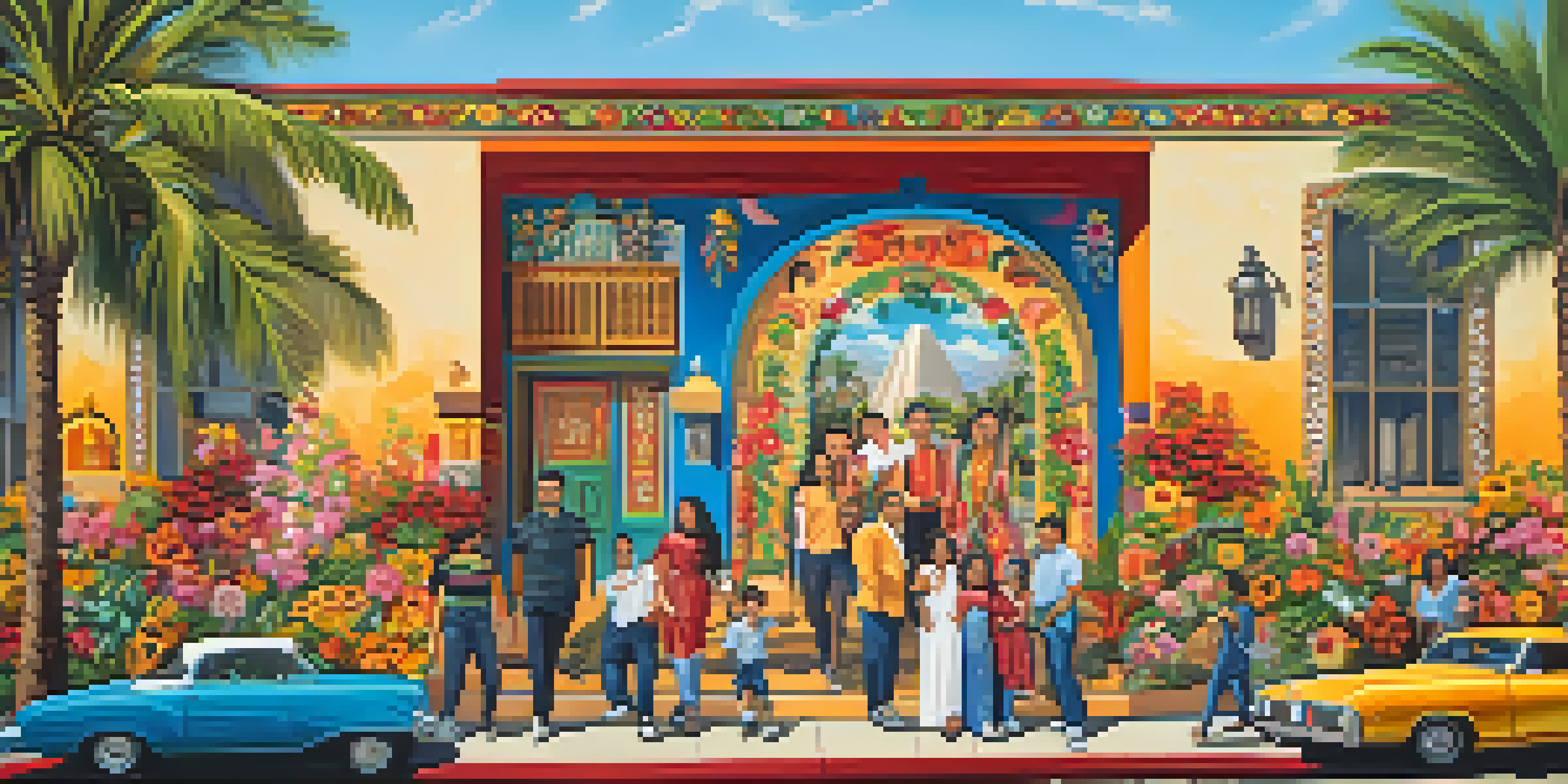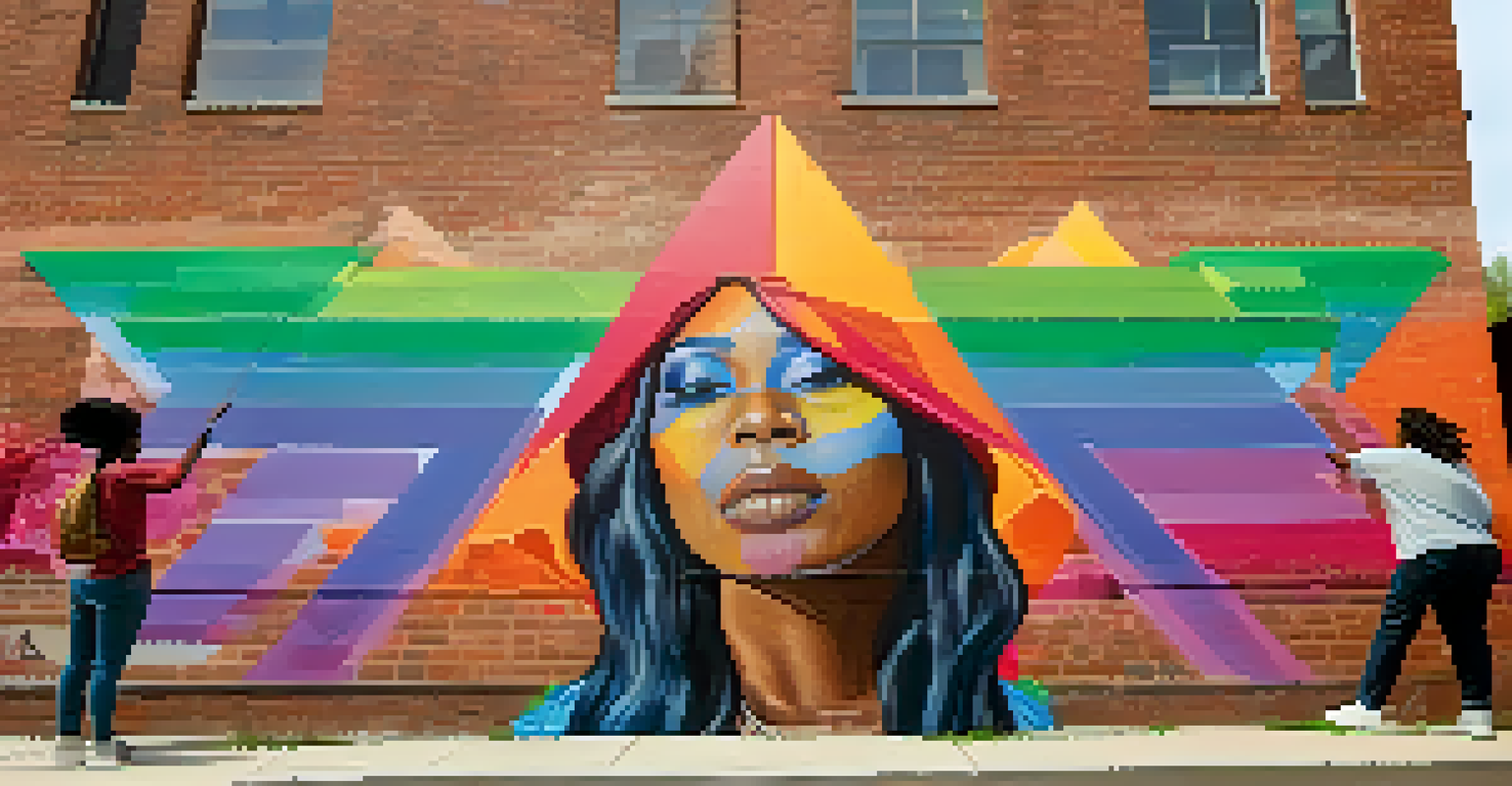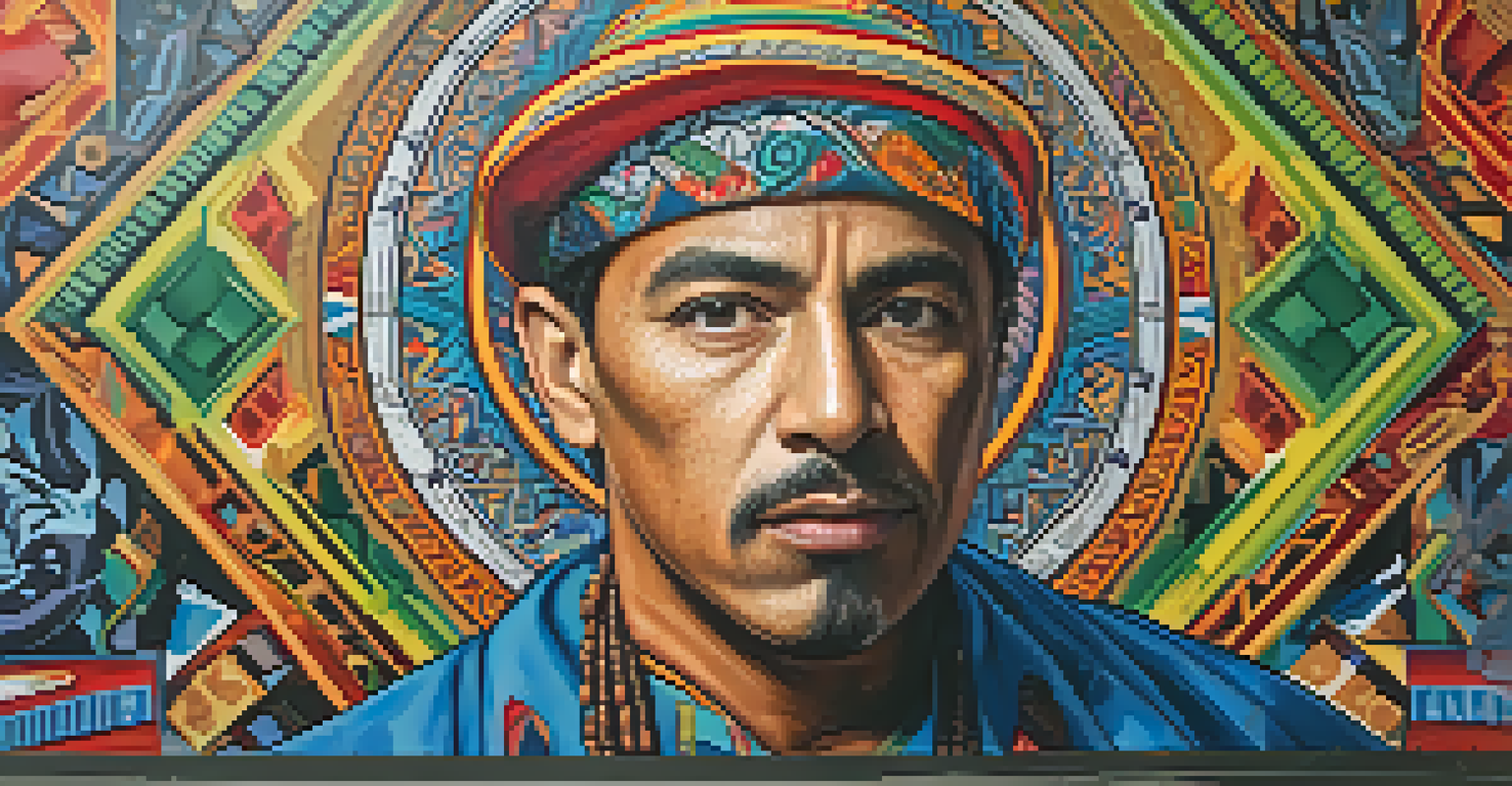Chicano Art and Its Role in Los Angeles History

Understanding Chicano Art: A Brief Overview
Chicano art emerged as a unique form of expression rooted in the Mexican-American experience. This artistic movement began in the 1960s, coinciding with the civil rights movement, and aimed to address social issues, identity, and cultural pride. Artists used various mediums, from murals to paintings, to convey their messages and connect with their communities.
Art is an opportunity for all of us to reflect on our lives and our communities.
The term 'Chicano' itself embodies a sense of identity, combining elements of Mexican heritage and American life. This duality is reflected in the art, showcasing vibrant colors and strong imagery that speak to both struggles and celebrations. Through Chicano art, artists have explored themes such as migration, family, and resistance, making it an integral part of Los Angeles' cultural landscape.
As we delve deeper into Chicano art, it's important to recognize how this movement not only represents a cultural identity but also serves as a platform for activism. The artworks often tackle issues like social justice, economic inequality, and political representation, making them an essential voice in the ongoing dialogue about community and identity.
Historical Context: The Roots of Chicano Art
To truly appreciate Chicano art, we must look back at the historical context that gave rise to this movement. The 1960s were marked by significant social upheaval, including the civil rights movement, which inspired many artists to use their talents for activism. In Los Angeles, a city with a rich Mexican-American population, artists found a fertile ground for their work to flourish.

The Chicano Movement, which sought to empower Mexican-Americans and address issues of discrimination, played a pivotal role in shaping the themes found in Chicano art. Artists like Carlos Almaraz and Judy Baca began creating murals that told the stories of their communities, serving as both a form of resistance and a celebration of cultural heritage. These artworks became symbols of pride and unity among Mexican-Americans.
Chicano Art: A Voice for Identity
Chicano art serves as a powerful expression of the Mexican-American experience, merging cultural pride with social activism.
Moreover, the political climate of the time encouraged artists to address broader societal issues through their work. From the struggles for land rights to the fight against police brutality, Chicano art became a powerful tool for expressing dissent and rallying support for change, making it historically significant in the landscape of Los Angeles.
Murals: The Heartbeat of Chicano Art in LA
Murals are perhaps the most recognizable form of Chicano art, adorning walls throughout Los Angeles. These large-scale paintings often tell stories of the community, featuring historical figures, cultural symbols, and social messages. They transform public spaces into galleries, making art accessible to everyone and fostering a sense of ownership among residents.
Chicano art is a vehicle for social change and a way to express cultural pride.
One of the most famous murals is 'The Great Wall of Los Angeles,' created by Judy Baca in the 1970s. This mural chronicles the history of California from a Chicano perspective, highlighting the contributions and struggles of marginalized communities. It serves as a reminder of the rich tapestry of experiences that shape Los Angeles, encouraging viewers to reflect on their own histories.
Moreover, the creation of murals often involves collaboration within the community, bringing people together to celebrate their heritage. This collective effort not only beautifies the neighborhood but also strengthens community bonds, creating a sense of pride and identity that resonates with residents and visitors alike.
Key Figures in Chicano Art: Influential Artists
Several artists have made significant contributions to the Chicano art movement, each bringing their unique style and perspective. One notable figure is Carlos Almaraz, whose vibrant, surrealist paintings often explore themes of identity and transformation. His works evoke a sense of emotional depth that resonates with the viewer, reflecting the complexity of the Chicano experience.
Another prominent artist is Judy Baca, renowned for her large-scale murals that highlight social justice issues and celebrate cultural heritage. Her passion for activism is evident in her art, which often serves as a platform for marginalized voices. Baca's work has not only left a lasting impact on the Chicano art scene but has also influenced future generations of artists.
Murals: Community Storytellers
Murals in Los Angeles highlight community narratives and historical struggles, transforming public spaces into accessible art galleries.
Additionally, artists like Salvador Torres and Eloy Torrez have also played crucial roles in shaping the movement, each contributing their perspectives through distinct styles. These artists have helped to elevate Chicano art, ensuring its place in the broader narrative of American art history and reinforcing its significance within the cultural fabric of Los Angeles.
Chicano Art and Social Activism: A Powerful Alliance
Chicano art is deeply intertwined with social activism, serving as a voice for the voiceless and a catalyst for change. Many artists use their work to address pressing social issues, such as immigration, police brutality, and educational disparities. This art not only reflects the struggles faced by the community but also inspires action and solidarity among its members.
For instance, during the anti-immigrant sentiment that surged in the 1980s and 1990s, artists responded with powerful imagery that challenged stereotypes and advocated for immigrant rights. Murals depicting the lives and contributions of immigrants served to humanize their experiences and foster empathy within the broader community. This sense of urgency and responsibility is a hallmark of Chicano art.
Furthermore, contemporary Chicano artists continue to engage with social issues, using their platforms to raise awareness and promote dialogue. By connecting art with activism, they keep the spirit of the Chicano movement alive, ensuring that the fight for justice and equality remains at the forefront of cultural discussions in Los Angeles.
The Evolution of Chicano Art: From Past to Present
Chicano art has evolved significantly since its inception, adapting to the changing social and political landscape. While early works primarily focused on issues of identity and cultural pride, contemporary Chicano artists are exploring a broader range of themes, including globalization, environmental justice, and intersectionality. This evolution reflects the dynamic nature of the community and the diverse experiences of its members.
Today, many artists are incorporating new technologies and mediums into their work, expanding the possibilities of expression. Digital art, installations, and performance art are just a few examples of how Chicano artists are pushing boundaries and challenging traditional notions of what art can be. This innovation keeps the movement fresh and relevant in an ever-changing world.
Evolution of Chicano Art
Contemporary Chicano artists are expanding the movement's themes to include globalization and environmental justice, showcasing its dynamic nature.
Moreover, as younger generations of artists emerge, they bring their unique perspectives and influences, creating a vibrant dialogue between the past and the present. This intergenerational exchange not only enriches the Chicano art movement but also ensures its continued relevance in the cultural landscape of Los Angeles.
The Impact of Chicano Art on Los Angeles Culture
Chicano art has had a profound impact on the cultural landscape of Los Angeles, shaping the city's identity and fostering a sense of community. The murals and artworks scattered throughout the city serve as constant reminders of the rich history and contributions of Mexican-Americans. They encourage residents and visitors alike to engage with the stories and experiences that define LA.
Additionally, Chicano art has influenced other artistic movements, inspiring artists from various backgrounds to explore themes of identity, social justice, and cultural heritage. This cross-pollination of ideas enriches the artistic community, creating a vibrant ecosystem where diverse voices can thrive. As a result, Chicano art has become a vital part of Los Angeles' cultural narrative.

Moreover, the recognition of Chicano art within the broader art world has opened up opportunities for artists to showcase their work on national and international stages. Exhibitions and festivals celebrating Chicano art continue to draw attention to its significance, ensuring that its contributions to the cultural dialogue are acknowledged and appreciated for generations to come.